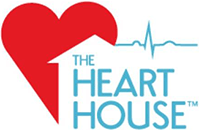Understanding Peripheral Vascular Diseases (PVD)
Peripheral vascular diseases (PVDs) encompass a variety of disorders that affect the blood vessels outside the heart and brain. These conditions can significantly impact circulation, resulting in discomfort, pain, and other complications.
What You Should Know:
If you are experiencing symptoms such as leg pain or weakness along with visible skin changes or decreased mobility, you could be at risk for peripheral artery disease (PAD). Our easy-to-use online self-assessment tool can help determine if you should schedule an ankle-brachial index (ABI) screening – a simple, non-invasive diagnostic test that can provide important information about the presence and severity of PAD.
Could PAD be Affecting Your Legs?
Take Our Free Online Assessment to Find Out
Peripheral artery disease can lead to leg pain and walking problems. If you are experiencing symptoms such as leg pain or weakness along with shortness of breath or chest pain, you could be at risk for PAD. Our easy-to-use online self-assessment tool can help determine if you should schedule an appointment with one of our dedicated vascular specialists for further testing.
Causes & Symptoms of
Peripheral Vascular Diseases
According to the American Heart Association, more than 20 million adults in the United States have peripheral artery disease (PAD), and more than 30 million adults have chronic venous insufficiency (CVI).
Those at the highest risk for developing a PVD are older adults. PVD risk also increases significantly in individuals with certain medical conditions or lifestyle factors, such as those with diabetes, high blood pressure, high cholesterol, obesity, or those who smoke.
Causes of Peripheral Vascular Diseases (PVD):
- Thromboangiitis obliterans (Buerger's disease)
An inflammatory disease strongly associated with tobacco use that most commonly affects smaller arteries and veins in the hands and feet.
- Raynaud's phenomenon
A condition that is often triggered by cold temperatures or stress and can cause arteries to spasm and narrow, limiting blood flow to the fingers, toes, ears, and nose.
- Thrombosis
The obstruction of blood flow due to blood clots, which tend to be more prevalent in leg arteries than in arm arteries.
- Embolism
A condition where a blood clot or other foreign material travels through the bloodstream and becomes lodged in a blood vessel, obstructing blood flow.
- Vasculitis
Inflammation of blood vessels due to autoimmune disorders like rheumatoid arthritis which can restrict blood flow.
- Diabetic angiopathy
High blood sugar levels associated with diabetes, which can damage blood vessels and cause peripheral artery disease (PAD).
Symptoms of Peripheral Vascular Diseases (PVD):
- Persistent leg discomfort, such as leg pain, cramping, numbness, or tingling.
- Skin discoloration, ulcers, or persistent wounds on your legs.
- Swelling in the legs or feet.
- Restless legs or leg itching.
- Aesthetic concerns, such as varicose veins or spider veins.
- Pelvic discomfort or lower back pain.
- Non-healing wounds on your legs.
- Decreased ability to walk, exercise, or perform daily activities due to leg discomfort or pain
Testing & Diagnosis Possibilities for Peripheral Vascular Diseases
There are a variety of tests that can help diagnose peripheral vascular diseases (PVDs) and determine the location and severity of any blockages. At [The Heart House], we tailor each patient’s testing and treatment plan to their needs for the best results. We utilize:
Vascular Ultrasound
A vascular ultrasound is an imaging test that uses high-frequency sound waves to evaluate blood flow through the arteries and veins. This advanced diagnostic tool offers detailed information that can be used to diagnose and guide the treatment of numerous conditions affecting the veins and arteries.
Peripheral Computed Tomography Angiography (CTA)
Peripheral CTA is a non-invasive imaging technique used to evaluate vascular conditions beyond the heart. This advanced medical imaging technology utilizes X-rays and computer technology to create detailed images of the blood vessels in the peripheral areas of the body, including the arms, legs, abdomen, and pelvis.
Other common diagnostic tests offered include:
- Ankle-Brachial Index (ABI) Screening
This compares blood pressure near the ankles to blood pressure in the arms using a blood pressure cuff. An index less than 0.9 generally indicates PVD. - Magnetic Resonance Angiography (MRA)
An MRA uses magnetic fields and radio waves to provide images of the body's blood vessels. - Blood Tests
These can check for blood cell counts, cholesterol levels, and markers that indicate increased risk. - Treadmill Tests
Walking on a treadmill can reveal symptoms of PVD that aren't present at rest. - Plethysmography
This test is used to measure changes in the volume of blood within an organ or limb.
Treatment Planning for
Peripheral Vascular Diseases
- Peripheral Arterial Disease (PAD)
PAD restricts blood flow to the legs, leading to symptoms like leg pain, cramping, and reduced mobility. Our interventions aim to improve circulation, alleviate discomfort, and prevent complications. - Deep Vein Thrombosis (DVT)
DVT is characterized by blood clots forming in deep veins, often in the legs. Our approach includes anticoagulation therapy and preventive measures to reduce the risk of complications like pulmonary embolism. - Chronic Venous Insufficiency (CVI)
CVI results from faulty leg veins, leading to swelling, pain, and skin changes. Our treatments aim to restore venous function, reduce discomfort, and enhance overall vascular health. - May-Thurner Syndrome
This condition occurs when a vein in the pelvis becomes compressed by an artery, leading to DVT. Our strategies focus on addressing the underlying compression and managing clot formation. - Pelvic Congestion Syndrome
Pelvic congestion causes chronic pelvic pain due to venous insufficiency. Our multidisciplinary approach targets the root cause, providing relief and improved quality of life.
Photo Gallery
Video Gallery
Testimonials
Photo Gallery
Risks if Left Untreated
Get To Know Our Cardiovascular Specialists
In Search of Care? Request a Consultation Today





